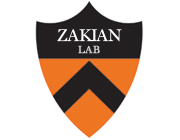Human PIF helicase is cell cycle regulated and associates with telomerase.
Publication Year
2006
Type
Journal Article
Abstract
The evolutionarily conserved PIF1 DNA helicase family is important for the maintenance of genome stability in the yeast, Saccharomyces cerevisiae. There are two PIF1 family helicases in S. cerevisiae, Pif1p and Rrm3p that both possess 5'-->3' DNA helicase activity but maintain unique functions in telomerase regulation and semi-conservative DNA replication. Database analysis shows that the PIF1 helicase family is represented by a single homologue in higher eukaryotes. To analyze the function of PIF1 homologues in mammals, we cloned the full length human PIF (hPIF) cDNA. Comparison of hPIF with its S. cerevisiae homologues showed that human PIF is equally similar to Pif1p and Rrm3p. Human PIF was expressed at low levels in a variety of tissues and immunofluorescence analysis showed that ectopic hPIF was localized to nuclear foci. hPIF was expressed in late S/G2 phase of the cell cycle and this cell cycle regulated abundance was conferred by both cell cycle regulated mRNA accumulation and ubiquitin-mediated degradation. Furthermore, hPIF is likely a target of the anaphase promoting complex/cyclosome as its abundance was decreased when an activator of the APC/C was overexpressed. Finally, antibodies against hPIF immunoprecipitated telomerase activity from human cell lines, and we have observed a physical interaction between hPIF and the catalytic subunit of telomerase, hTERT. Our data suggest that human PIF, like S. cerevisiae Pif1p, plays a role in telomerase regulation.
Keywords
Humans,
cell cycle,
Gene Expression Profiling,
Molecular Sequence Data,
RNA, Messenger,
Protein Binding,
HeLa Cells,
Cloning, Molecular,
Amino Acid Sequence,
Sequence Alignment,
Protein Processing, Post-Translational,
Cell Nucleus,
Immunoprecipitation,
Proteasome Endopeptidase Complex,
Anaphase-Promoting Complex-Cyclosome,
Ubiquitin-Protein Ligase Complexes,
DNA Helicases,
Telomerase
Journal
Cell Cycle
Volume
5
Issue
23
Pages
2796-804
Date Published
12/2006
ISSN Number
1551-4005
Alternate Journal
Cell Cycle
PMID
17172855

